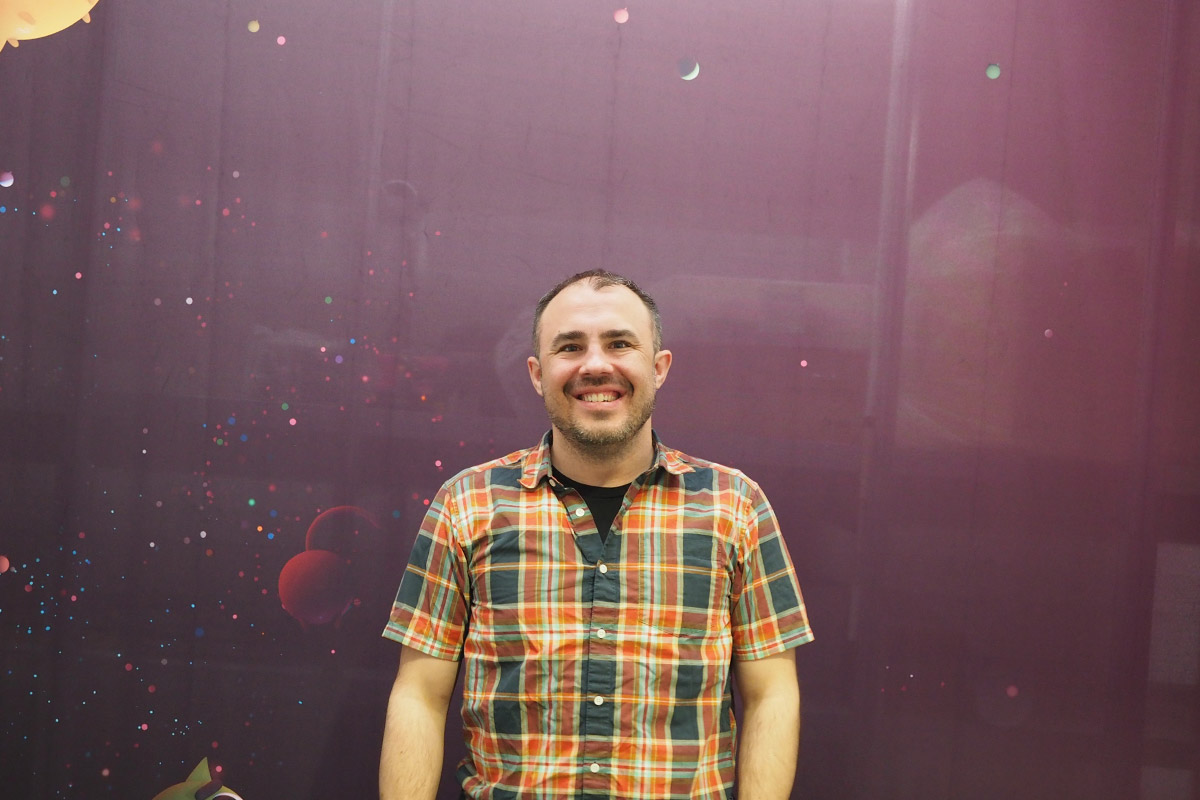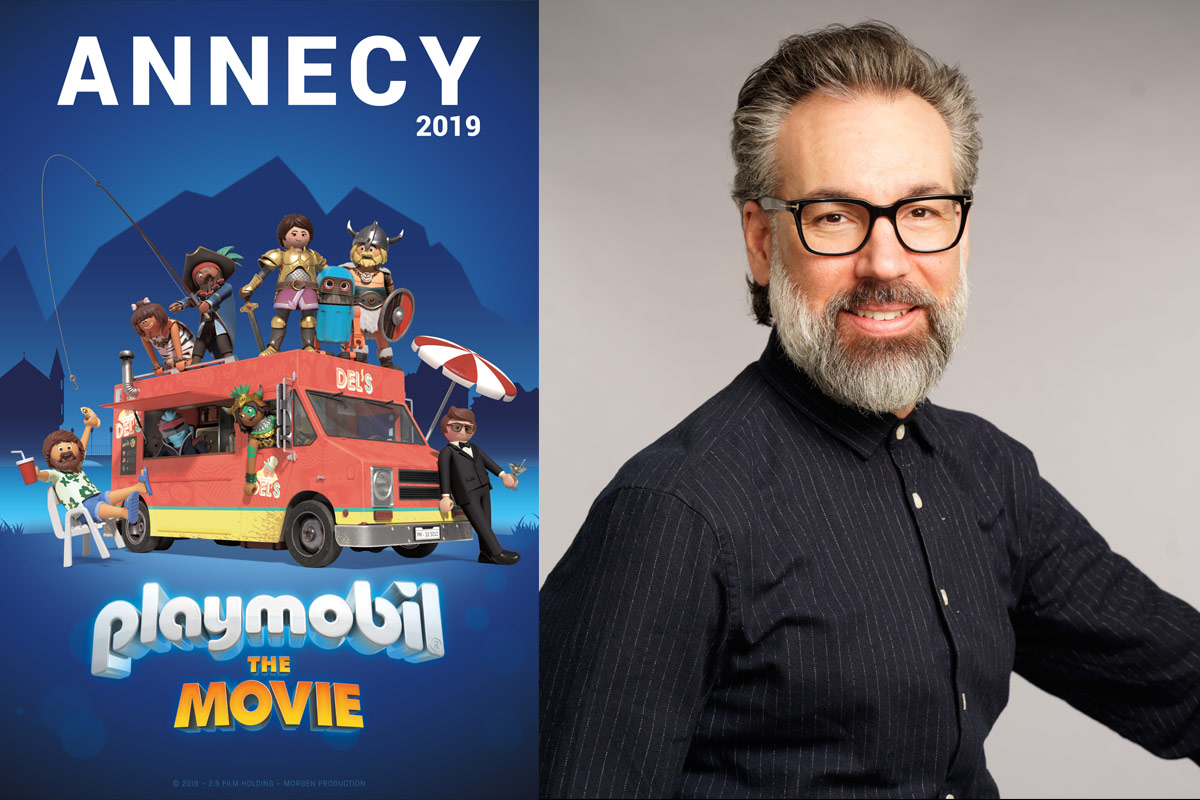Advanced Micro Devices, Inc. (AMD) attended FMX 2019 to showcase their latest technologies which enable studios to boost their production speeds for developing top-quality 3D animation with their booth exhibition and a panel discussion program, “Before Afterwards: Putting Assets to Work”.
AMD is one of the top semiconductor companies in the world and chances are that many of you have heard of their Graphics Processing Unit (GPU) brand “Radeon™” and their Central Processing Unit (CPU) brand “Ryzen™”. Their contributions to digital animation creation are developing hardware and software such as “AMD Radeon™ ProRender”.
Brian Savery, with his background on Pixar’s rendering software system “RenderMan, is the Product Manager who is spearheading the Radeon™ ProRender project. In this article, we will find out about the role of AMD in the animation industry.
Interview with Brian Savery
Animationweek: What are the missions of AMD for the animation industry?
Brian Savery: I’m in the Pro Graphics group at AMD, and what we’re trying to do is enable creators all over. I’m on the software side, so a lot of what we’re doing is creating software that will enable people to create their animations (specifically rendering animations) in a way that takes advantage of both AMD hardware and software solutions that support the open hardware standards. For example, we have a renderer that uses OpenCL™*1, so technically it could run on any vendor’s hardware that supports OpenCL™, just like any game that uses OpenGL®*2 can run on any user’s graphics cards.
What we’re seeing is that there’s somewhat of a revolution of content creators being able to leverage graphics hardware as well as CPUs for doing animation, and what we would like to do is see all of those technologies enabled in an open way. We’re not going to lock users down to one vendor’s hardware, so with whatever hardware they want they can create their animation, and have their renders come out the same way, basically.
To answer what AMD’s goal is here, it is to enable the content creators, in an open manner, to create their content faster, get faster feedback, let them iterate, make changes, and be more productive.
*1: OpenCL™ (https://www.khronos.org/opencl/) is an open software library for cross-platform parallel programming, by Khronos group.
*2: OpenGL® (https://opengl.org/) is an industry-standard graphics library, by Khronos group.
Animationweek: Could you give us examples of success stories of studios using AMD’s products?
Brian Savery: While AMD has to keep most of their customer interactions confidential, I can talk publicly about Jellyfish Pictures*3, a UK studio which is recognized as one of the most respected visual effects and animation studios in the world. They have been using AMD CPUs for creating visual effects for TV series, like Black Mirror for Netflix and block buster film titles such as Rogue One and Star Wars: The Last Jedi. We have other smaller studios who have used AMD GPUs for rendering.
Traditionally, we’ve seen a lot of studios using CPUs for final frame rendering, and now we see (especially) larger studios use GPUs for rendering, both in pre-viz and final frame. It seems to be starting more from the smaller studios, or the more agile-enabled ones, that are jumping over to the GPU side. Whereas the larger studios, like Pixar or DreamWorks, are mainly the ones that are still doing all of their rendering on CPUs, at least for the final frames that you see in the movies.
*3: Here are the links to the YouTube videos about the collaboration between AMD and Jellyfish Pictures:
YouTube Video: “Jellyfish Pictures Relies on Autodesk Arnold and AMD”
YouTube Video: “AMD Ryzen™ PRO: Make the Ordinary Extraordinary at Jellyfish Pictures”
Animationweek: What are the benefits of Radeon™ ProRender for animation studios?
Brian Savery: As an animation studio, you can choose whatever hardware you want to use and you’re not going to be locked down to one of your competitors’ graphics cards, or AMD’s graphics cards. Obviously, with us being AMD, we can optimize Radeon™ ProRender to work very well on AMD’s graphics cards, and we can take advantage of specific knowledge that we have about their architecture, but we’re giving the users the freedom of having a level playing field for the renderer. If you want half of your studio running on AMD and half of them running on ompetitor’s graphics cards, you can do that and get the same picture out of the renderer. The technology supports both renderers, whereas a lot of renderers will be locked down to one or the other.
The other advantage is that we can also leverage hardware sales. For example, we control both the software side and the hardware side. If a studio needs a specific feature in the renderer, let’s say they need a specific render pass, like a global illumination or ambient occlusion render pass done, we can add that to the renderer specifically for them. Additionally, if they want to work with AMD to purchase the hardware, we can tie those two things together, and there’s no other renderer out there that can tie together the hardware sales with the software development.
Animationweek: Could you please let us know AMD’s future vision with the animation industry?
Brian Savery: You can download Radeon™ ProRender right now. You can download a plugin for Maya®, 3ds Max®, Blender, etc. We have 4-5 different plugins.
Two things that are interesting: We are integrating Radeon™ ProRender into CAD applications as well as animation applications, and the another thing is that we see Radeon™ ProRender as a full spectrum of rendering solutions. What I mean by that is a lot of times, when studios are going and setting up the layout for their shots, they might use just the built-in OpenGL® renderer, or the Viewport 2.0 that’s in Maya®, to render things initially.
What we are working on, and we have this in beta now, is what we call “full spectrum rendering” for ProRender, where we could do the fast-quality-with-rasterize rendering, and then when you’re ready to go and do the final frame rendering, switch over to the Radeon™ ProRender side, which is a fully-raytraced solution.
The interesting part there is that we can build the solution that is using the same renderer, but you just have a dial where you go between “quality” versus “time”. If you want to do the longer render that takes more time, or you want to do the fast render that’s maybe a bit lower quality, you’re able to do that. The advantage here is then you can think about rendering earlier into your pipeline.
When you’re doing your layout, you can be working on higher-quality rendering. For example, during layout, you are setting up a scene where there is a shadow that doesn’t work in layout. If you are in the lower-quality rendering, you might not see that shadow at that time, so when you get to animation, you think: “Oh, there’s a shadow here that didn’t look good. Now I have to go back and switch things around.” If you’re working with a higher-quality rendering at an earlier stage in the pipeline, you might be able to catch those issues and not have to iterate later on.
So, where we’re taking Radeon™ ProRender is to be able to address all the different stages with one software solution.
We’re working on other specific features: We recently introduced an AI-based denoiser, so you can do your rendering for less time and get a cleaner image, we’re working on improving that as well. We’re also working on improving the ability of a GPU renderer to not be limited by scene size, and really bring in as big of a scene into the GPU renderer, leveraging both our GPU and CPU solutions that we have at AMD, to take advantage of that.
Those are the basic ideas of the rest of the year where we should see improvements on Radeon™ ProRender.






